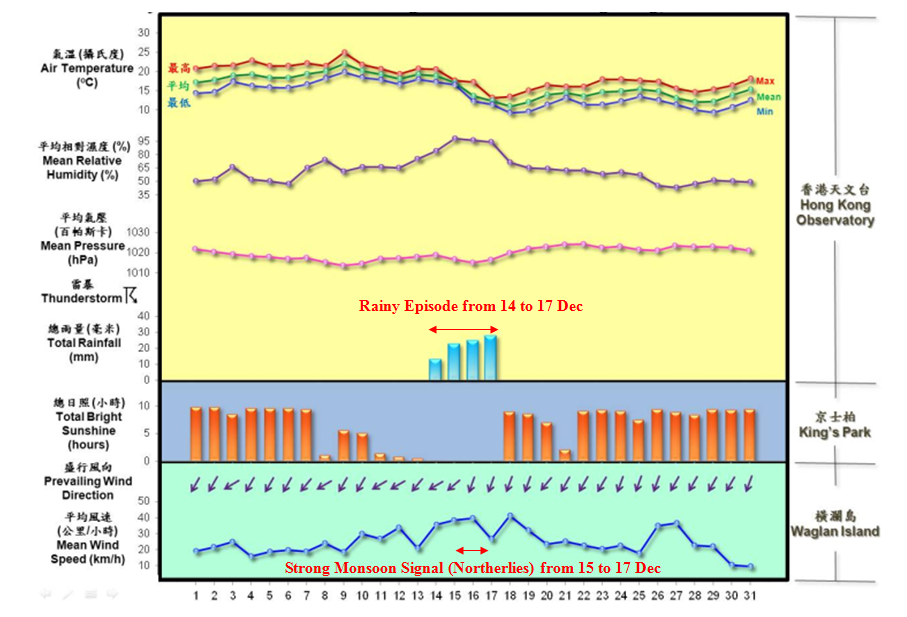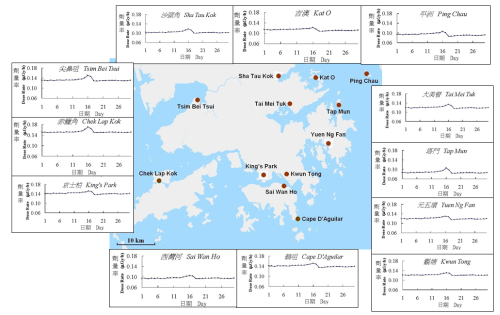Radiation from Wind and Rain
Radiation from Wind and Rain
LEE Shuk-ming and HONG Chi-yuen
March 2014
We are living in a world surrounded by radiation. The radiation comes from the Earth below and from cosmic radiation through space above.
On Earth, naturally-occurring radiation is here before human existence. Such environmental radiation existing in the Earth crust diffuses slowly into air, water, soil and the body of living organisms (animals and plants). As radiation cannot be felt or sensed, it was not until about a hundred years ago when scientists discovered the existence of radiation and invented instruments to measure it.
In addition to natural radiation, there is also man-made radiation generated from medical uses, nuclear power generation and other purposes. As it is under controlled use, such artificial radiation is generally negligible in the environment1.
There are differences in the ambient radiation levels at different places due to variations in the geographical location (latitude and altitude) and the radioactive contents of local rock and soil. Even at the same place, the ambient radiation level also varies at different times due to different weather conditions.
For instance, during a typical rain episode, initially, rain will wash down natural radioactive materials in the air to the ground, raising the ambient radiation level in a very short time. Then after prolonged rainfall, some natural radioactive materials in the air have been washed away, thus lowering the ambient radiation from its peak level for some time before returning to normal.
Winds also affect the ambient gamma radiation level. Air from the continent generally contains more natural radioactive material released from rock and soil when compared to that from the ocean. Hence for Hong Kong, when the wind blows from the north, it brings more natural radioactive material from the continent to the coastal region, slightly raising the ambient radiation level. On the contrary, when the wind is from the south, there is much less natural radioactive material over the ocean and the ambient radiation level is lower.
A good case showing the variation of ambient gamma radiation brought about by rain and northerlies is the rainy and windy episode from 15 to 17 December 2013. The approach of an upper level disturbance brought rain to Hong Kong on 14 December and the rain became heavier and more frequent over the next couple of days. Coupled with the arrival of an intense winter monsoon, temperatures fell significantly and it was gloomy, rainy and cold on 16 and 17 December. As the rainbands associated with the upper level disturbance moved away on 18 December, rain ceased and local weather turned mainly fine and dry (Figure 1).

Figure 1 Daily Values of Selected Meteorological Elements for Hong Kong in December 2013
The rain together with the strong northerly winds raised the ambient gamma radiation level at all the 12 radiation monitoring stations over Hong Kong from 15 to 17 December (Figure 2). After the rain ceased on 18 December, the ambient gamma radiation level all dropped from the peak level for some time before returning to previous level. Members of the public can access the ambient gamma2 radiation level, which is updated at hourly interval, in Hong Kong at the Observatory's website.

Figure 2 Ambient Gamma Radiation Level of Hong Kong in December 2013
Notes:
[1] Trace amount of artificial radionuclides are still detected at times in the environmental and food samples using precise equipment. Their existence could primarily be attributed to atmospheric nuclear weapon tests from 1945 to 1980.
[2] Radiation is commonly classified as alpha, beta and gamma radiation, of which gamma radiation has the highest penetrating power and is relatively easily measured in the environment.
[1] Trace amount of artificial radionuclides are still detected at times in the environmental and food samples using precise equipment. Their existence could primarily be attributed to atmospheric nuclear weapon tests from 1945 to 1980.
[2] Radiation is commonly classified as alpha, beta and gamma radiation, of which gamma radiation has the highest penetrating power and is relatively easily measured in the environment.